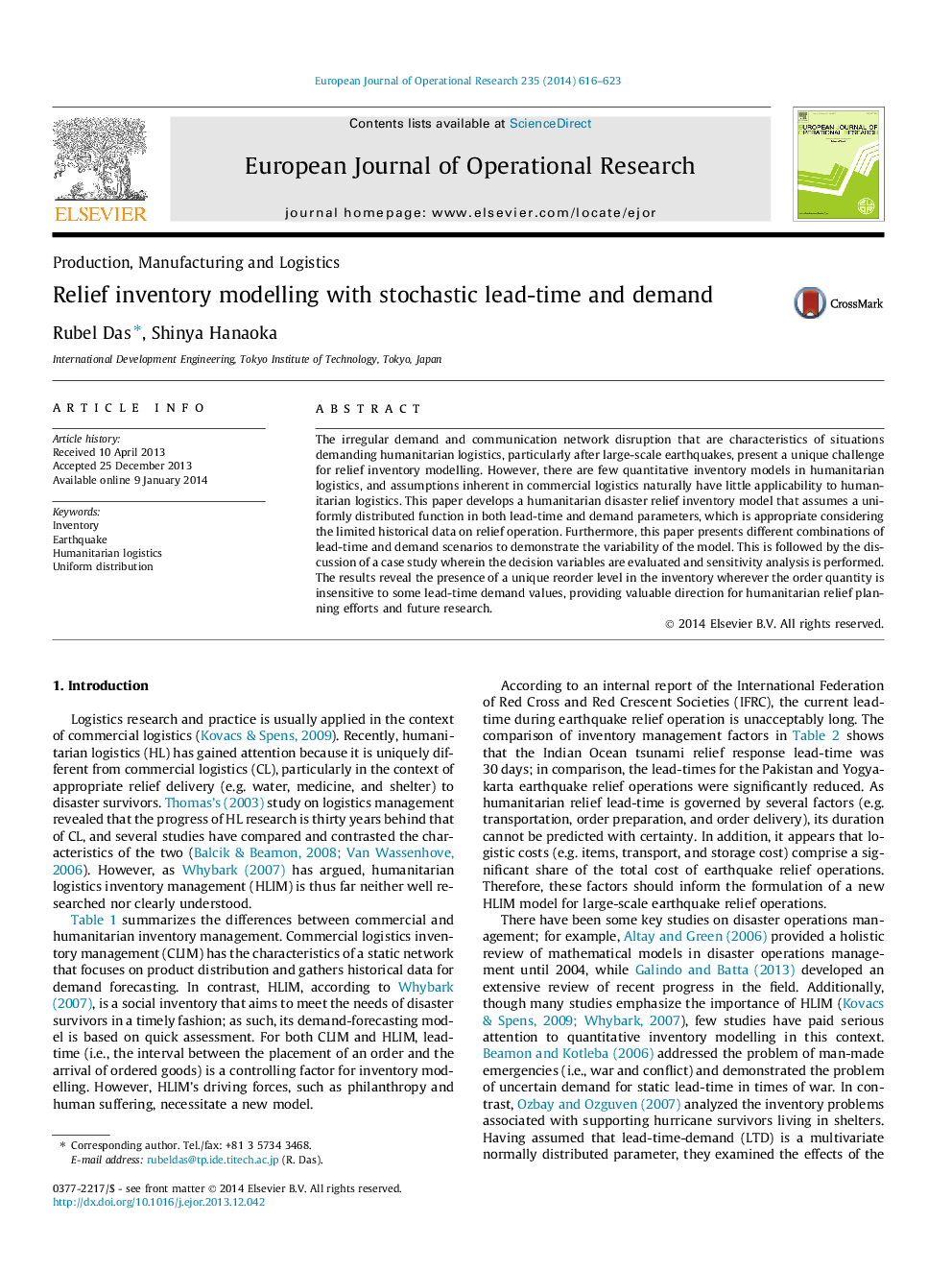| Article ID | Journal | Published Year | Pages | File Type |
|---|---|---|---|---|
| 476670 | European Journal of Operational Research | 2014 | 8 Pages |
•Humanitarian logistics and commercial logistics differ in terms of planning and designing.•Combined effects of two stochastic variables on inventory modelling are explored.•The presence of a unique reorder level wherever the order quantity is insensitive to certain parameter values.
The irregular demand and communication network disruption that are characteristics of situations demanding humanitarian logistics, particularly after large-scale earthquakes, present a unique challenge for relief inventory modelling. However, there are few quantitative inventory models in humanitarian logistics, and assumptions inherent in commercial logistics naturally have little applicability to humanitarian logistics. This paper develops a humanitarian disaster relief inventory model that assumes a uniformly distributed function in both lead-time and demand parameters, which is appropriate considering the limited historical data on relief operation. Furthermore, this paper presents different combinations of lead-time and demand scenarios to demonstrate the variability of the model. This is followed by the discussion of a case study wherein the decision variables are evaluated and sensitivity analysis is performed. The results reveal the presence of a unique reorder level in the inventory wherever the order quantity is insensitive to some lead-time demand values, providing valuable direction for humanitarian relief planning efforts and future research.
